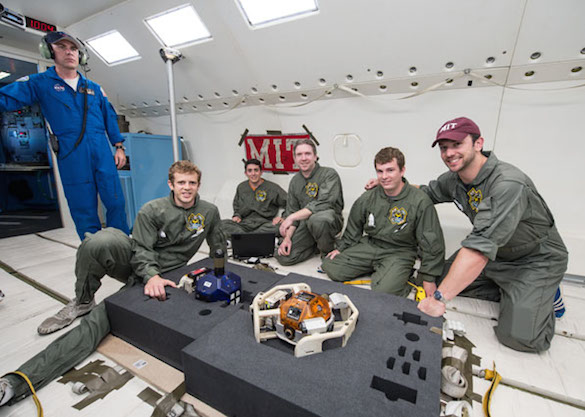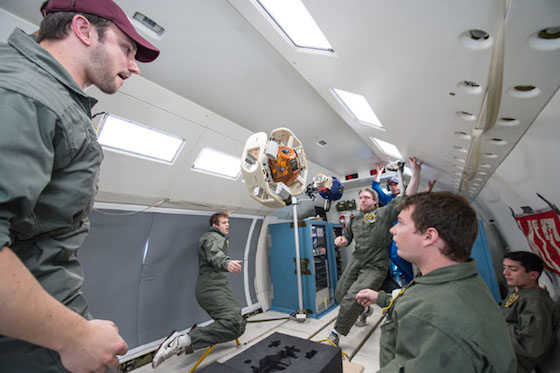Reduced Gravity Flight Demonstration of Synchronized Position Hold Engage Reorient Experimental Satellites (SPHERES) Universal Docking Ports
PI: Alvar Saenz Otero, Massachusetts Institute of Technology
PI: Alvar Saenz Otero, Massachusetts Institute of Technology

- TA04 Robotics, Tele-Robotics and Autonomous Systems
Reusing assets from existing satellites has the potential to greatly reduce the cost of new missions. To provide a testing environment for these new technologies, the Phoenix team has paired with the MIT Space Systems Lab to utilize the Synchronized Position Hold Engage Reorient Experimental Satellites (SPHERES) testbed onboard the International Space Station (ISS). As part of this partnership, MIT has developed a Universal Docking Port (UDP) designed to enable multiple (SPHERES) to rigidly dock and undock. With this capability, spacecraft reconfiguration and modularity technical challenges can be addressed, including performing relative sensing and characterization for docking, reconfiguring the system controller to account for the new dynamics of the docked vehicles, and reconfiguring the actuation and sensing subsystems of the new system.
A parabolic flight campaign will validate the design of the UDP in a full 6-DOF environment, prior to ISS operations. While the UDPs have been successful in 2D ground testing, only 3 of the 6 degrees of freedom are tested. Additionally, the 2D environment removes 3D effects which need to be tested prior to launch, such as clocking angles and relative offsets in the other degrees of freedom.

Technology Details
-
Selection DateAFO8 (Apr 2014)
-
Program StatusCompleted
- 1 Parabolic
Development Team
-
PIAlvar Saenz Otero
-
Organization
-
SponsorDARPA
-
More Information

